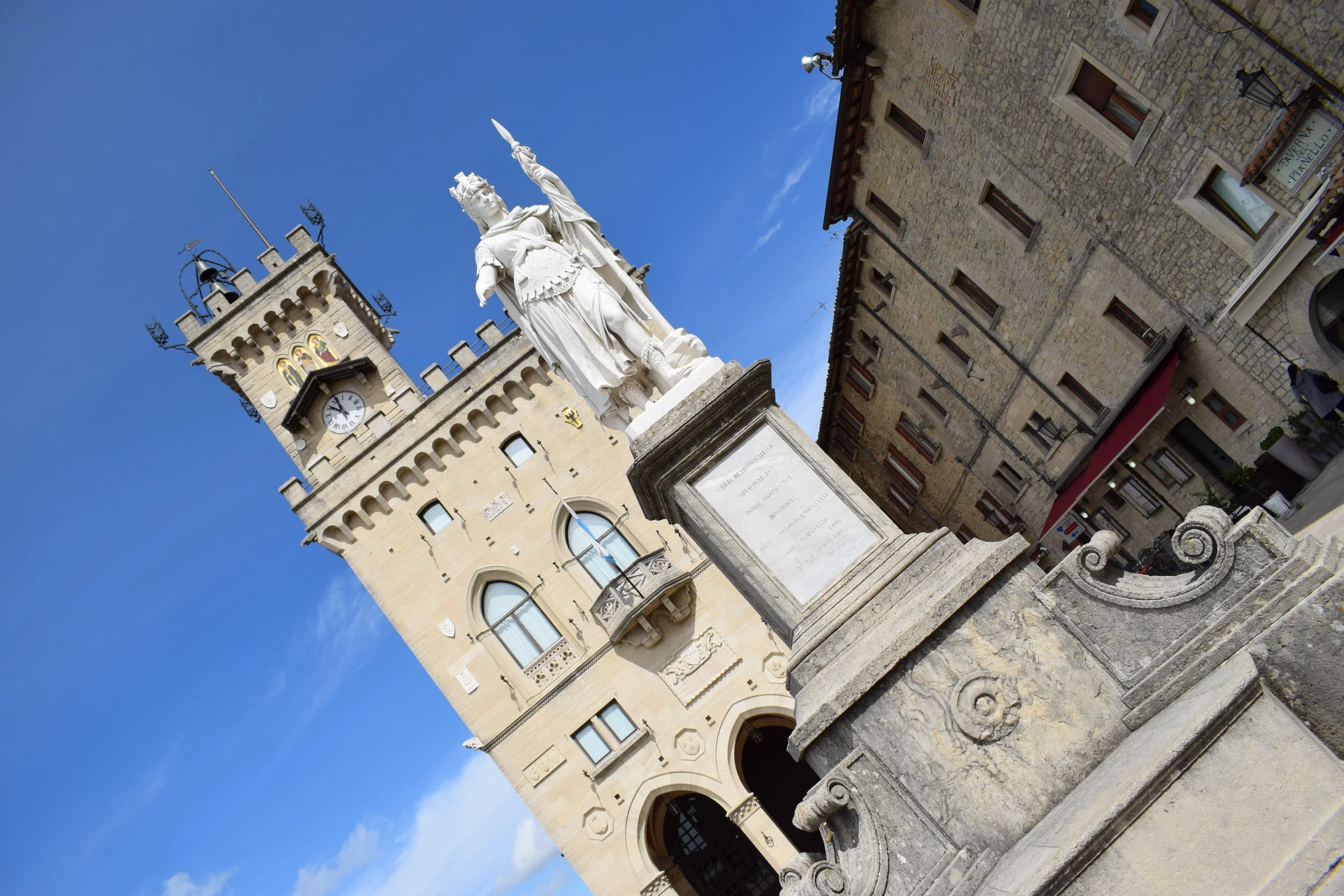Why is San Marino the world’s oldest republic?
/One of San Marino's three towers.
San Marino is a European microstate. The sleepy nation is entirely surrounded by Italy and is 26 times smaller than Greater London. Its capital, the City of San Marino, has just under 4,500 inhabitants, less than half the population of the Isle of Skye, and its main attractions can be seen in the best part of an afternoon. San Marino’s claim to fame is its notoriously hapless national football team, who have won only one of the 143 matches they’ve contested since their formation, and the three towers atop Mount Titano. So that begs the question – how has a nation whose position is so vulnerable and claustrophobic managed to gain republic status and outlast all those before it?
The definition of a republic is simple – it is a sovereign state or country with a form of government whose power resides in elected individuals. They represent the citizens by exercising power according to the rule of law. Although it wasn’t the first, San Marino lays claim to being the world’s oldest republic still in existence. According to legend, it forged its standing in 301 AD when a Christian stonemason named Marinus, later canonised with the “Saint” prefix, travelled from the Dalmatian island of Rab, seeking refuge from religious persecution on Titano. It was there he built a chapel and monastery, which would come to fruition as the foundation of San Marino. It is an anachronistic throwback to the times where much of Europe comprised of tiny political units, with states like Andorra, Liechtenstein and Monaco sharing similar origins and topography.
Forming a republic is admirable, but maintaining for so long is incredible. In 1463 Pope Pius II expanded Sammarinese territory by giving them some castles and several towns and almost 150 years later following various political threats, a treaty of protection was signed in 1602 with Pope Clement VIII. Despite being within reaching distance of the Romans, Ottomans, Austria-Hungary, and a fascist Italy, San Marino has maintained its independence throughout some of the world’s most important movements. Its strategic position on a mountain, numerous friendship agreements with Italy and, an albeit small, military have also contributed to its preservation.
Perhaps, throughout history, its small size has been its greatest asset. Controlling less land, in some ways, has been an easier feat. Indefensible remote areas are non-existent and a geographic vantage point has always been an advantage. Anyone wishing to invade would have to create a supply chain through Italy first, difficult as the two nations are intrinsically linked. They share a language and cuisines, they’re trading partners and the border between the two is always open. Ironically, San Marino’s biggest threat moving forward is the Italians. But their historical relationship as neighbours creates a strong bond. San Marino remained neutral during World War II, yet still hosted over 100,000 refugees from neighbouring regions of Italy. It seems highly unlikely that there will ever be a rift between the two, and the future of the world’s oldest republic appears to be safe. For as long as San Marino exists it will retain that very impressive mantle.















Just because you're staying in a destination, doesn't mean you have to spend all of your trip there! Here are five amazing day trips you can take from some of the world's most-visited cities.